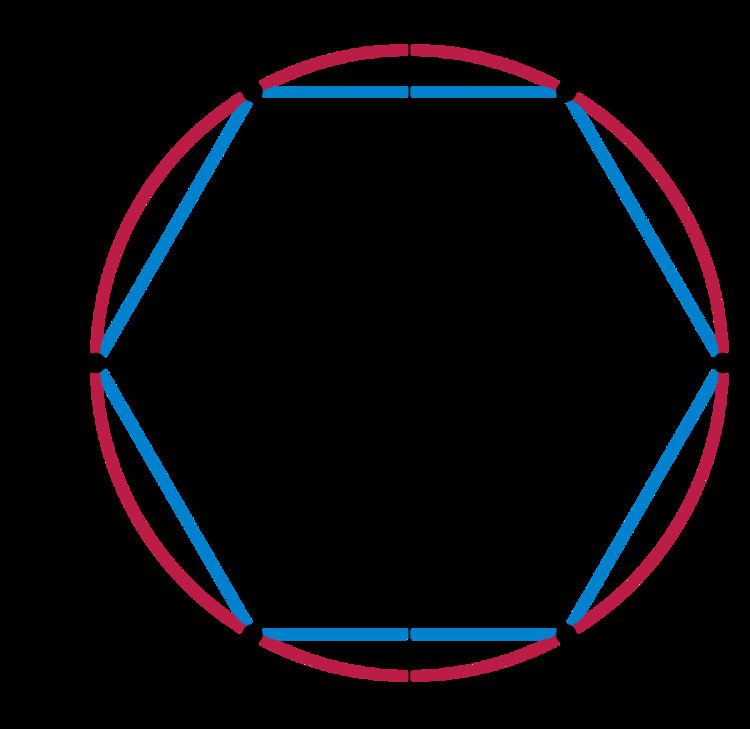 | ||
In mathematics, the Virasoro algebra (named after the physicist Miguel Angel Virasoro) is a complex Lie algebra, the unique central extension of the Witt algebra. It is widely used in two-dimensional conformal field theory and in string theory.
Contents
Definition
The Virasoro algebra is spanned by generators Ln for n ∈ ℤ and the central charge c. These generators satisfy
The factor of 1⁄12 is merely a matter of convention.
Lowest weight representations
A lowest weight representation of the Virasoro algebra is a representation generated by a primary state: a vector
where the number h called the conformal dimension or conformal weight of
A lowest weight representation is spanned by eigenstates of
More precisely, a lowest weight representation is spanned by
For any pair of complex numbers h and c, the Verma module
The states
A Verma module is irreducible if and only if it has no singular vectors.
Singular vectors
A singular vector or null vector of a lowest weight representation is a state that is both descendent and primary.
A sufficient condition for the Verma module
In particular,
Hermitian form and unitarity
A lowest weight representation with a real value of
The Gram determinant of a basis of the level
where the function p(N) is the partition function, and AN is some constant. The Kac determinant formula was stated by V. Kac (1978), and its first published proof was given by Feigin and Fuks (1984).
The irreducible lowest weight representation with values h and c is unitary if and only if either c ≥1 and h≥0, or c is one of the values
for m = 2, 3, 4, ..., and h is one of the values
for r = 1, 2, 3, ..., m−1 and s= 1, 2, 3, ..., r.
Daniel Friedan, Zongan Qiu, and Stephen Shenker (1984) showed that these conditions are necessary, and Peter Goddard, Adrian Kent, and David Olive (1986) used the coset construction or GKO construction (identifying unitary representations of the Virasoro algebra within tensor products of unitary representations of affine Kac–Moody algebras) to show that they are sufficient.
The unitary irreducible lowest weight representations with c ≤ 1 are called the discrete series representations of the Virasoro algebra. These are special cases of the representations with m = q/(p−q), 0<r<q, 0< s<p for p and q coprime integers and r and s integers, called the minimal models and first studied in Belavin et al. (1984).
The first few discrete series representations are given by:
Conformal field theory
In two dimensions, the algebra of local conformal transformations is made of two copies of the Witt algebra. It follows that the symmetry algebra of two-dimensional conformal field theory is the Virasoro algebra.
String theory
Since the Virasoro algebra comprises the generators of the conformal group of the worldsheet, the stress tensor in string theory obeys the commutation relations of (two copies of) the Virasoro algebra. This is because the conformal group decomposes into separate diffeomorphisms of the forward and back lightcones. Diffeomorphism invariance of the worldsheet implies additionally that the stress tensor vanishes. This is known as the Virasoro constraint, and in the quantum theory, cannot be applied to all the states in the theory, but rather only on the physical states (compare Gupta-Bleuler quantization).
Generalizations
There are two supersymmetric N=1 extensions of the Virasoro algebra, called the Neveu-Schwarz algebra and the Ramond algebra. Their theory is similar to that of the Virasoro algebra, now involving Grassmann numbers. There are further extensions of these algebras with more supersymmetry, such as the N = 2 superconformal algebra.
The Virasoro algebra is a central extension of the Lie algebra of meromorphic vector fields on a genus 0 Riemann surface that are holomorphic except at two fixed points. I V Krichever and S P Novikov (1987) found a central extension of the Lie algebra of meromorphic vector fields on a higher genus compact Riemann surface that are holomorphic except at two fixed points, and their analysis has been extended to supermanifolds by J Rabin (1995).
The Virasoro algebra also has vertex algebraic and conformal algebraic counterparts, which basically come from arranging all the basis elements into generating series and working with single objects. Unsurprisingly these are called the vertex Virasoro and conformal Virasoro algebras respectively.
The Virasoro algebra may also be specified as a presentation. This is to say that all of its generators may be determined recursively ("generated") out of merely two judiciously chosen generators (e.g. L3 and L−2), and six equations (constraint conditions) among them, by systematic use of the Jacobi identity. (D Fairlie, J Nuyts, and C Zachos, 1988. Shortly thereafter, J Uretsky discovered the original 8 conditions could be pared down to six.)
Correspondingly, for the super Virasoro algebra extension, the Ramond algebra follows from two generating generators and five conditions; and the Neveu-Schwarz algebra out of two such and nine conditions.
History
The Witt algebra (the Virasoro algebra without the central extension) was discovered by É. Cartan (1909). Its analogues over finite fields were studied by E. Witt in about the 1930s. The central extension of the Witt algebra that gives the Virasoro algebra was first found (in characteristic p>0) by R. E. Block (1966, page 381) and independently rediscovered (in characteristic 0) by I. M. Gelfand and D. B. Fuchs (1968). Virasoro (1970) wrote down some operators generating the Virasoso algebra while studying dual resonance models, though he did not find the central extension. The central extension giving the Virasoro algebra was rediscovered in physics shortly after by J. H. Weis, according to Brower and Thorn (1971, footnote on page 167).
